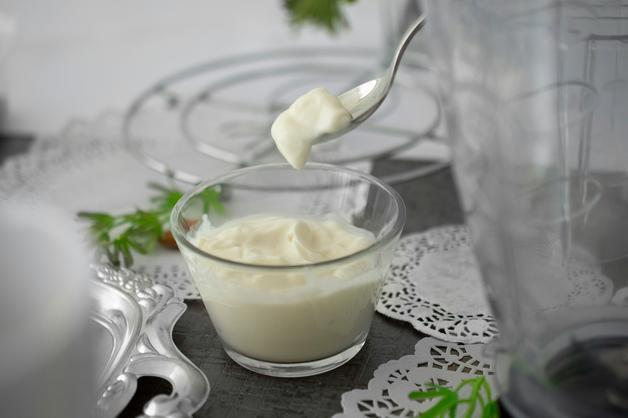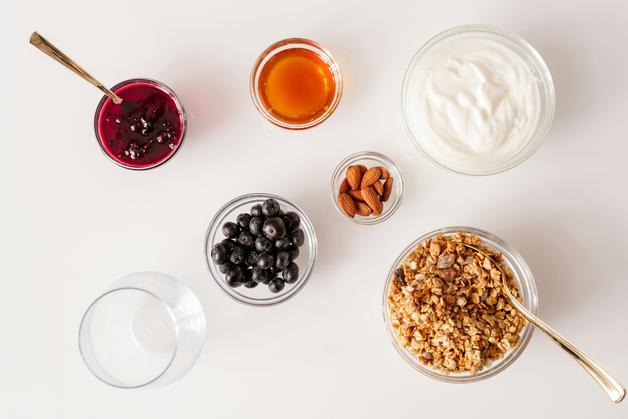Wondering when and how to introduce baby yogurt? The world of infant feeding can feel like a tightrope walk. Should you add dairy at six months, or wait a little longer? Is full-fat better? Will yogurt upset tiny tummies or smooth the road to diverse eating? Navigating these questions, parents want reassurance and clarity—especially when allergies, gut health, and brain development are at stake. Baby yogurt arrives on the scene promising gentle nutrition, but not every spoonful is the same. Together, let’s unpack what baby yogurt really means, address concerns about allergens and safety, explore diverse paths to tasty, nourishing meals, and cultivate confidence for the sometimes-bumpy journey of introducing new foods.
What Is Baby Yogurt? Understanding the Science and Practicalities
The term baby yogurt refers to products intentionally formulated for infants and toddlers, focusing on gentle textures and age-appropriate nutrition. Unlike many yogurts on the adult shelf, baby yogurt revolves around whole milk, offering a rich source of dietary fat—vital for the rapid brain development and astonishing cellular growth that define early childhood. This is not the age for skimming, blending, or sweetening; the best options are plain, full-fat, and pasteurized.
Why the fuss about pasteurization? Raw milk can harbor dangerous bacteria such as Salmonella or Listeria, especially risky for developing immune systems. Pasteurization—gentle heating to destroy pathogens—renders baby yogurt safe to enjoy. Many options also feature live active cultures—friendly bacterial species such as probiotics, which support a balanced intestinal microbiome and facilitate healthy digestion, potentially reducing colic and easing constipation.
Let’s demystify terms. What exactly does “enriched” mean? Certain baby yogurts go a step further, enhancing their formulas with essential vitamins (A, D, B12), calcium, iron, and extra probiotics designed for developing digestive tracts. Read labels thoroughly: you want minimal—ideally zero—added sugars, no honey (a source of infantile botulism risk), no artificial flavors, and evidence of both pasteurization and live cultures.
When and How to Introduce Baby Yogurt: Readiness, Allergies, and Community Practice
Starting solids feels like a milestone, fraught with anticipation and occasional uncertainty. The consensus across pediatric societies? Baby yogurt is often suitable around six months, once other solids enter the menu. Yet, every baby presents a unique readiness puzzle: sitting with stability, diminished tongue-thrust reflex, grabbing for your spoon, and managing food in the mouth signal the “go” light.
How much? Begin small. One or two teaspoons—just a taste—allow you to observe reactions. Over time, this can expand to 2–4 ounces within a varied diet, always complementing rather than displacing breast milk or infant formula (which should remain central until at least twelve months). Offer it gently: a soft spoon, a pre-loaded utensil for independent attempts, or blending with fruit purees for flavor variety and visual appeal.
Allergy risk, though real, should not create anxiety. Dairy is classified as a major food allergen, potentially provoking hives, gastrointestinal upset, or more severe responses. Introduce baby yogurt incrementally, with a three-day observation window before offering other new foods. If you or your baby have a personal or immediate family history of allergies, consult a healthcare provider prior to introducing dairy. Probiotics and fermentation make yogurt easier to tolerate than milk for many infants, given reduced lactose levels—the sugar that can challenge immature digestive systems.
Choosing the Best Baby Yogurt: Plain, Full-Fat, and Beyond
Not every dairy product in the refrigerator aisle earns the “baby yogurt” label. The standouts share certain characteristics:
- Plain, unsweetened, full-fat: Essential for neurological growth and energy needs.
- Pasteurized: Safety first.
- Evidence of live active cultures: Look for Lactobacillus bulgaricus, Streptococcus thermophilus, or other probiotics—these microbes engineer the yogurt’s creamy texture and digestive benefits.
- Minimal, real-food ingredient lists: Milk, cultures—anything beyond that demands scrutiny.
- No added sugars, honey, artificial flavors, or thickeners.
Cow’s milk yogurt is the gold standard, but goat or sheep’s milk yogurts, when fortified with folic acid and vitamin D, can serve as suitable alternatives, especially for sensitive tummies. Plant-based yogurts—most reliably those based on fortified soy—offer dairy-free paths, provided they supply equivalent protein, calcium, and vitamin D. Beware coconut or almond yogurts without meaningful nutrients; always scrutinize fortification and ingredient quality.
Greek yogurt deserves a special mention: its thick consistency not only supports motor-skill development for self-feeding but also raises the protein quotient—especially welcome in rapidly growing children. Blend gently with steamed fruit or vegetables to diversify nutrients and flavors while avoiding added sugars.
Nutritional Benefits and Potential Risks: Evidence-Driven Guidance
What makes baby yogurt so valuable for growing infants? Let’s travel through its nutritional architecture:
- Protein for muscle, organ, and cellular growth.
- Healthy fats (emphasis on omega-3 and omega-6) supporting brain development, nerve insulation (myelination), and long-term metabolic health.
- Calcium and vitamin D forging bones and teeth in a once-in-a-lifetime burst of skeletal growth.
- B vitamins (B6, B12, riboflavin, niacin) facilitating immune development, red blood cell formation, and energy metabolism.
- Probiotics: microbial allies fortifying gut flora, aiding digestion, and potentially lessening allergy risk.
Scientifically, yogurt’s probiotic profile sets it apart; these live cultures metabolize much of the lactose, producing lactic acid and other metabolites that create a tangy flavor and softer texture. For babies prone to minor digestive upsets, this transformation makes yogurt uniquely gentle.
Allergy risks remain. Watch for rashes, swelling, vomiting, or apparent abdominal pain. True lactose intolerance in infancy is rare, but milk protein allergy—triggered by casein or whey—may emerge with symptoms from hives to digestive distress; any such response warrants swift medical advice.
Excessive dairy can impede iron absorption, raising the specter of iron deficiency. Maintain moderation: offer baby yogurt in reasonable portions, alongside iron-rich foods like lentils, pureed meats, or fortified cereals.
Serving, Meal Planning, and Storage: Practical Strategies for Everyday Life
How to keep baby yogurt fresh, interesting, and nourishing, day after day? Simplicity pays off: serve it plain or blend it with mashed fruits—banana, blueberry, peach—or gently cooked vegetables such as carrot or sweet potato. For a protein boost, swirl in pureed chickpeas or lentils (after safe introduction).
Greek-style yogurt’s luxurious texture makes it easy to pre-load on spoons for tiny hands, encourages self-feeding, and prevents messy drips (well, sometimes). Dollop yogurt on soft, steamed vegetable sticks as a dip, or mix it with infant cereals for breakfast that balances complex carbohydrates and protein.
Storage demands care: refrigerate open containers immediately, use homemade yogurt within 3–5 days, and never leave yogurt unrefrigerated for more than two hours. Signals of spoilage—off odors, altered texture, separation—mean it’s time to discard. For outings, insulated bags and ice packs preserve safety.
Homemade vs. Store-Bought Baby Yogurt: Pros, Cons, and Hygiene
Is homemade better? Some parents cherish the control: using pasteurized whole milk, adjusting fermenting times for desired tang, omitting commercial thickeners, confidently skipping all sugars and honey (never safe before 12 months due to infant botulism risk). Adhering to scrupulous hygiene, using sanitized containers, tightly managing temperature, and refrigerating quickly are all non-negotiable.
Store-bought baby yogurt offers consistent convenience and reassurance—clear labeling, controlled pasteurization, and, if you choose wisely, unadulterated plain yogurt with live active cultures. When time or confidence is short, this can be an invaluable ally on busy mornings or family outings. Check for credible certifications and transparent nutritional labeling. Both approaches nourish growth when applied thoughtfully.
Myths, Troubleshooting, and FAQs: Scientific Answers for Everyday Challenges
Does every baby love yogurt instantly? Not at all. Texture sensitivity is real; some infants recoil from slick, cool foods, while others embrace them wholeheartedly. If a wince meets the first spoonful, patience and gentle persistence—perhaps mixing yogurt with a familiar fruit or gradually offering Greek yogurt’s firmer texture—can help.
Concerns about lactose intolerance frequently surface but are rare in infancy. Most adverse reactions relate to milk proteins. If rash, persistent digestive symptoms, or respiratory discomfort appear, pause immediately and arrange for professional assessment. Goat, sheep, or soy-based yogurts—properly fortified—can sometimes substitute, but always monitor closely and discuss changes with your healthcare provider.
Yogurt need not stand alone: mashed avocado, pureed meats, or fortified infant cereals can all be excellent, nutrient-dense options for babies hesitant or intolerant to dairy.
Cultivating Healthy Eating Habits: Early Exposure, Diverse Tastes
Introducing baby yogurt without sweeteners allows early, sensitive palates to appreciate the natural flavor of dairy, steering taste preferences away from sugar before habits set in. Pairing yogurt with vegetables or grains transforms snacking into sensory exploration and supports a robust, adaptive approach to new tastes.
Variety is everything. Offer different textures, temperatures, and food combinations—not only fruits and vegetables, but also diverse protein sources. Encourage self-feeding, embrace mess, and trust that food acceptance waxes and wanes as your baby learns.
Key Takeaways
- Baby yogurt delivers protein, healthy fats, calcium, vitamins, and probiotics—elements essential for growth, bone strength, immune function, and digestive health.
- Introduce plain, pasteurized, full-fat baby yogurt from around six months—as part of a varied diet, in small initial portions, and never as a substitute for breast milk or infant formula in the first year.
- Avoid yogurts with added sugar, honey, thickeners, or artificial flavors in the first year of life. Seek products with live active cultures and safe ingredients.
- Monitor closely for allergy or intolerance: symptoms like rash, swelling, vomiting, or persistent fussiness warrant prompt consultation with your healthcare provider.
- Both homemade and store-bought baby yogurt can be healthy choices—emphasize hygiene, ingredient quality, and age-appropriate nutrition.
- Creative presentation—blending with pureed vegetable or fruit, using Greek yogurt as a dip, adding to infant cereals—keeps meals engaging.
- For personalized guidance, up-to-date recommendations, and comprehensive health questionnaires, parents are invited to download the Heloa app for tailored child health advice and resources.
Curiosity, patience, and informed choices guide you through these crucial early food experiences—one joyful, sometimes messy, always meaningful spoonful at a time.
Questions Parents Ask
Is baby yogurt the same as regular yogurt?
Baby yogurt is specially formulated to meet the needs of infants and young children. Unlike most regular yogurts, baby yogurt is made with pasteurized milk and designed to have a very smooth texture, making it easier for babies to eat and reducing the risk of choking. Baby yogurts also tend to be enriched with important nutrients like vitamin D or iron, which support healthy growth and development. It’s also important to choose options without added sugars, artificial flavors, or preservatives, while adult yogurts may contain these ingredients. Reassuringly, choosing baby yogurt helps you offer a safe and nutritious dairy introduction that’s adapted for younger tummies.
Can I give flavored or sweetened yogurt to my baby?
Giving babies flavored or sweetened yogurts may seem tempting, especially if you hope to please their palate. However, it is generally best to opt for plain, unsweetened varieties for the earliest introductions. This approach helps babies become accustomed to natural flavors and reduces exposure to added sugars, which are not recommended in infant diets. Many flavored yogurts are higher in sugar and may contain artificial additives. If you wish to vary the taste, consider mixing plain baby yogurt with a small amount of mashed fruit or a gentle veggie puree. This makes mealtimes fun while keeping them nutritious and safe.
How do I choose a baby yogurt if my child has an allergy or sensitivity?
If your child has a known allergy or sensitivity—especially to cow’s milk protein—it is necessary to be extra cautious. Some baby yogurts use cow’s, goat’s, or even sheep’s milk, and even traces can cause reactions in sensitive children. Always check labels thoroughly and speak with your healthcare provider before introducing new dairy products. There are fortified plant-based yogurts, like soy yogurts with added calcium and vitamin D, which may be suitable alternatives for some babies, but each child is unique, and medical advice is essential for safe introduction. If you ever have any doubts or notice unusual symptoms, don’t hesitate to reach out for professional support.










